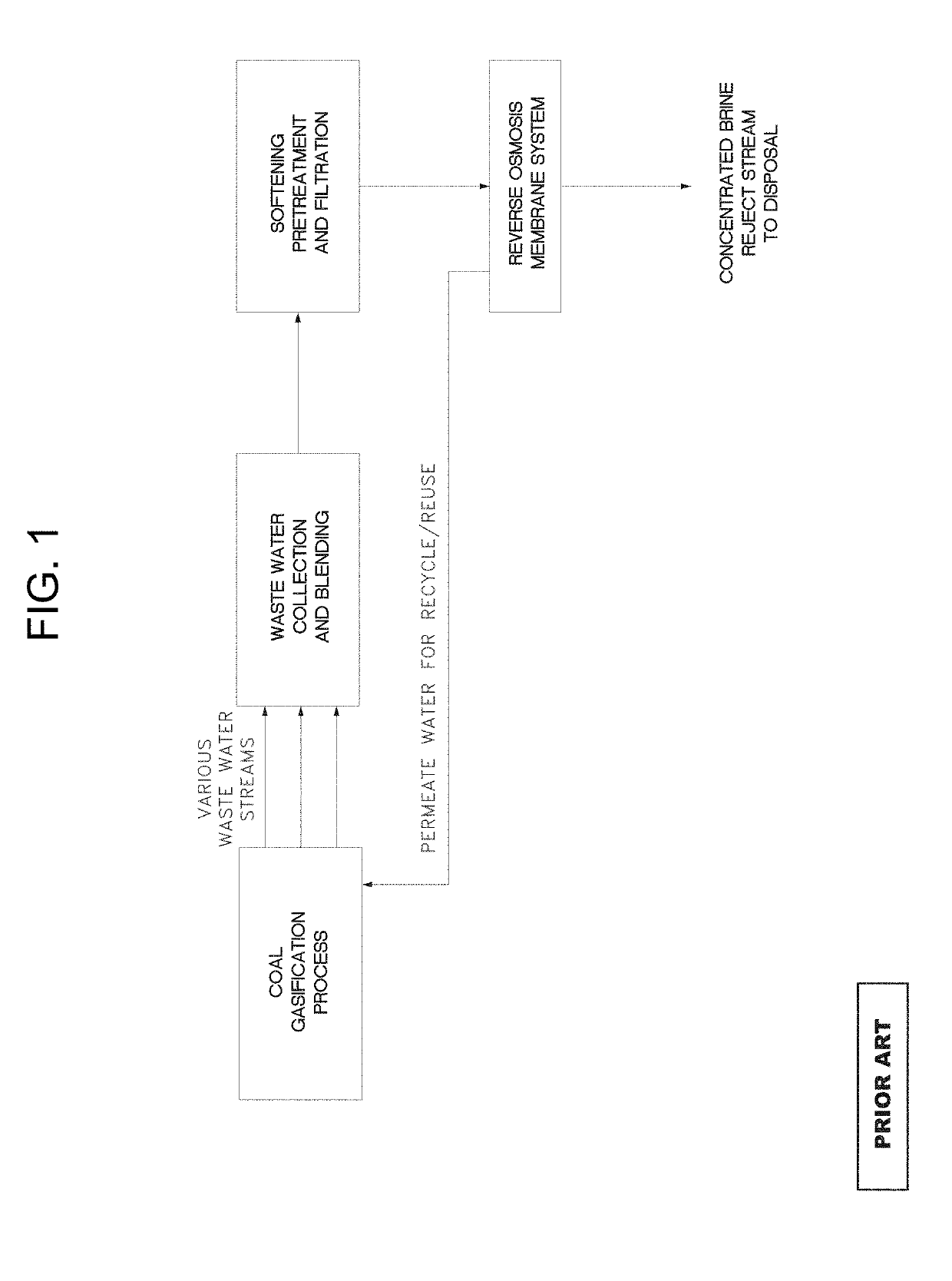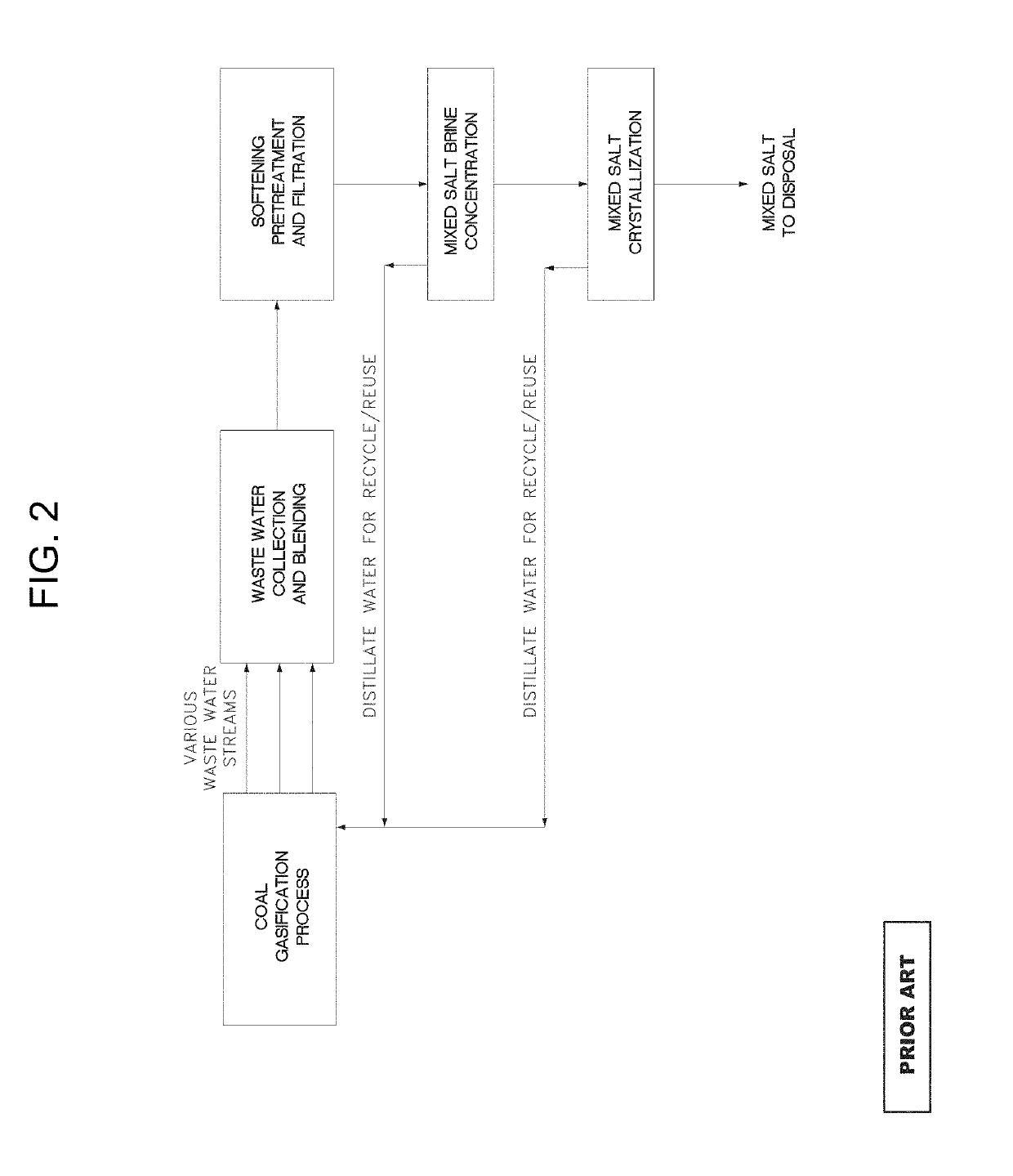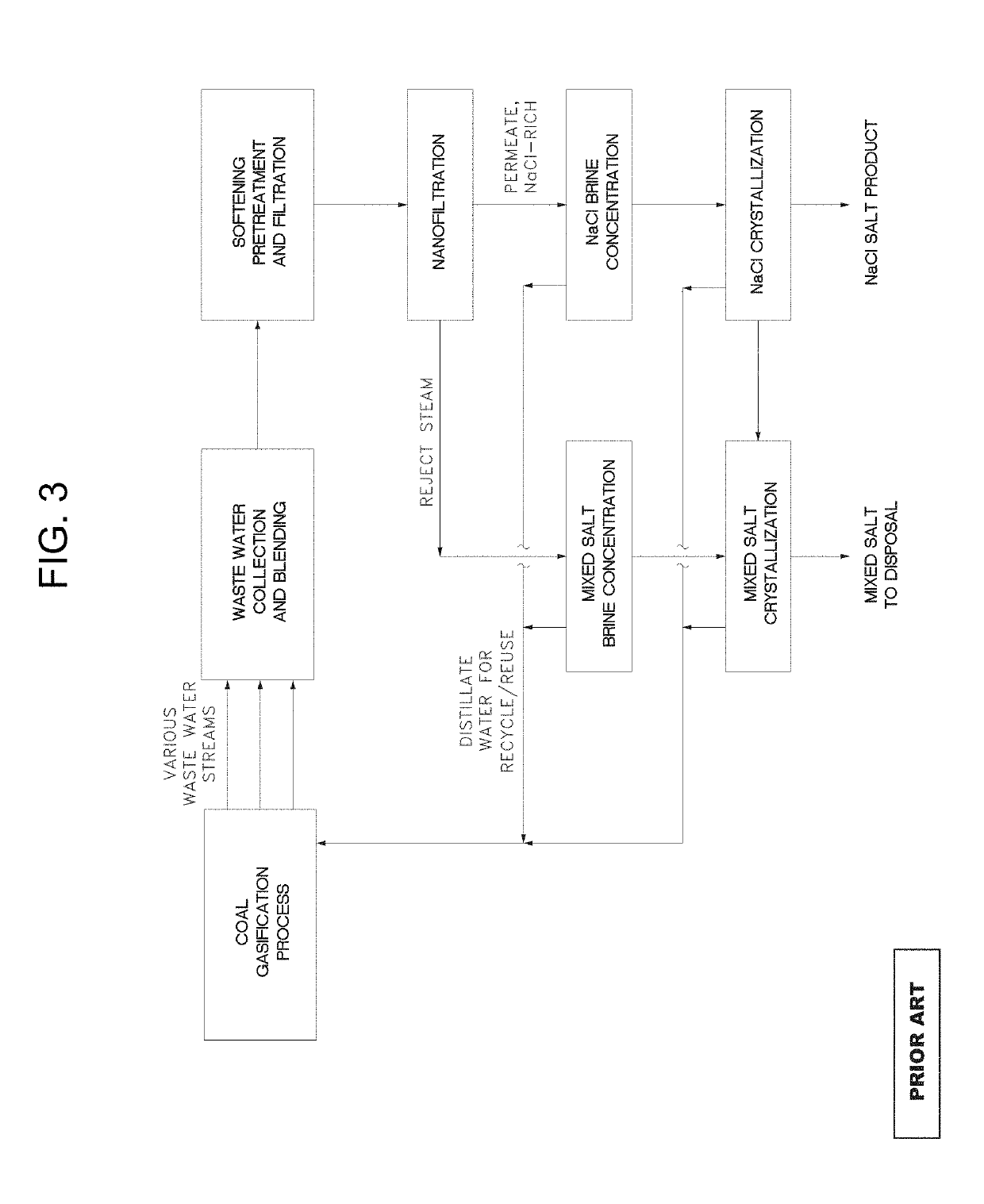Salt production from wastewater
a technology of wastewater and salt production, applied in water treatment multi-stage treatment, water/sewage multi-stage treatment, treatment of wastewater in multi-stage stages, etc., can solve the problems of waste water streams generated at such facilities that typically require disposal, the purification and/or reuse of wastewater, and limited oil and gas supplies
- Summary
- Abstract
- Description
- Claims
- Application Information
AI Technical Summary
Benefits of technology
Problems solved by technology
Method used
Image
Examples
example 1
[0054]In this example, we describe a typical embodiment of the invention, which can be employed to generate pure salts of sodium sulfate and sodium chloride. In a first part of this example, consider that various wastewater streams flow from the CTX process and are combined and blended. This blended wastewater stream is pretreated with various unit operations including softening with chemical agents including hydrated lime and sodium carbonate and sodium hydroxide. The softened water is then concentrated with membrane and thermal concentrators before being fed to our Crystallizer system for pure salt recovery. The volumetric flow rate of this stream is 50 ton / h feeding to the concentrator which is reduced to 13.6 ton / h as feed to our Crystallizer system. The TDS of this stream is 19.38% by weight.
[0055]In a first part of this example, consider a softened and concentrated stream with the following chemistry, which has relatively high concentrations of sulfate relative to chloride.
Con...
example 2
[0060]In this example, consider this alternate water chemistry which is to be fed to the invented art. This chemistry differs from that of Example 1 in that it has a relatively higher concentration of sodium chloride, relative to sodium sulfate, and we show how the invented art is flexible to generate pure salts with changes in feed water chemistry. Sodium sulfate salt produced is 814 kg / h. Sodium chloride salt produced is 1.64 ton / h.
Concen-1st Stage Na2SO4 trator CrystallizerCrystallizerACP ParameterUnitFeedFeedBlowdownEffluent1Mass T / Hr51.513.66.76.7Flow Rate2Cappm0005883Mgppm00004Nappm1829369433107679955245Kppm491843733676CO3ppm00007HCO3ppm5183608Clppm18932718581459581476899SO4ppm140785343327714141210NO3ppm197414914711TDSppm51376195000281909245728
example 3
[0061]In this example, the conventional mixed-salt crystallizer technology is compared with a process as first described herein for Pure Salt Crystallization.
[0062]Consider a process similar to that described in Example 1, which generates 13.6 ton / h hour of concentrated brine flowing from the upstream concentration stage. As shown in the Example 1, our pure salt crystallization process was applied to generate 1.44 ton / h of pure sodium sulfate and 1.07 ton / h of pure sodium chloride salts.
[0063]In this example, we consider a mixed-salt crystallizer which would be fed the softened and concentrated stream directly and directly crystallizes all of the dissolved salts in the same crystallizer, generating a salt crystal mixture of sodium sulfate and sodium chloride—a mixed salt. This salt can be similarly dewatered and generates a mixed salt flow rate of 2.65 ton / h.
[0064]Here we see the limitation of the conventional technology as it generates a waste salt stream of 2.65 ton / h, which must ...
PUM
 Login to View More
Login to View More Abstract
Description
Claims
Application Information
 Login to View More
Login to View More - R&D
- Intellectual Property
- Life Sciences
- Materials
- Tech Scout
- Unparalleled Data Quality
- Higher Quality Content
- 60% Fewer Hallucinations
Browse by: Latest US Patents, China's latest patents, Technical Efficacy Thesaurus, Application Domain, Technology Topic, Popular Technical Reports.
© 2025 PatSnap. All rights reserved.Legal|Privacy policy|Modern Slavery Act Transparency Statement|Sitemap|About US| Contact US: help@patsnap.com



